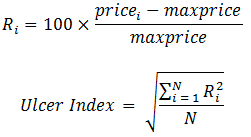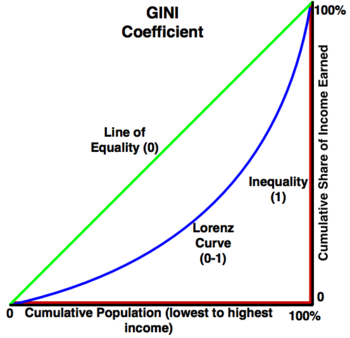It looks like you're new here. If you want to get involved, click one of these buttons!

IMHO the answers are: no (it doesn't mean this) and yes (it is supposed to mean this).>> The Ulcer Index is about half of the S&P 500 meaning half as risky.
Is that what UI means / is supposed to mean?
If drawdown A is twice that of drawdown B, it is already being penalized twice as much by simply using its magnitude. Squaring that figure distorts this. And what is magical about squaring, as opposed to, say cubing, or taking the retracements to the 1.5 power? (These are all positive numbers we're using.) Why is squaring the appropriate "penalty"?A better method [than merely summing] is to add the squares of the retracements, in order to penalize large retracements proportionately more than small ones.




BlackRock Securities Lending, Blackrock, January 2021Securities lending is a well-established practice whereby U.S. registered funds, such as mutual funds, make loans of securities to seek an incremental increase in returns for fund shareholders. This paper explains the basics of securities lending, outlines the benefits and risks for investors, and describes BlackRock’s leading approach to securities lending.
How well did your asset manager weather the market storm? Vanguard, Sept. 2020Vanguard’s securities-lending program—which lends equities under the same philosophy and approach today as it has since well before the global financial crisis—is unique in its exclusive focus on benefiting our investors and not our bottom line. We adhere strictly to a "value-lending" philosophy, managing our counterparty credit limits and collateral pool internally through [Vanguard Fixed Income Group] FIG.
Rick, Here is what I started doing. I divide my funds into three groups 1) Mixed Asset, 2) Uncorrelated, and 3) the tactical sleeve. The first two categories are buy and hold and as long as the quality of the fund is intact, I don't worry about performance. For the tactical funds, I track the previous month return, three month trend, and flows. If they are negative, I have to ask myself why? Is the fund peaking or is it blip.Lynn, thanks so much for sharing your thoughts, especially on GAVAX. I look forward to reading your commentary on non correlated assets. Your articles have really helped me, and I’m using MFO screeners more and more. I feel indebted.
© 2015 Mutual Fund Observer. All rights reserved.
© 2015 Mutual Fund Observer. All rights reserved. Powered by Vanilla